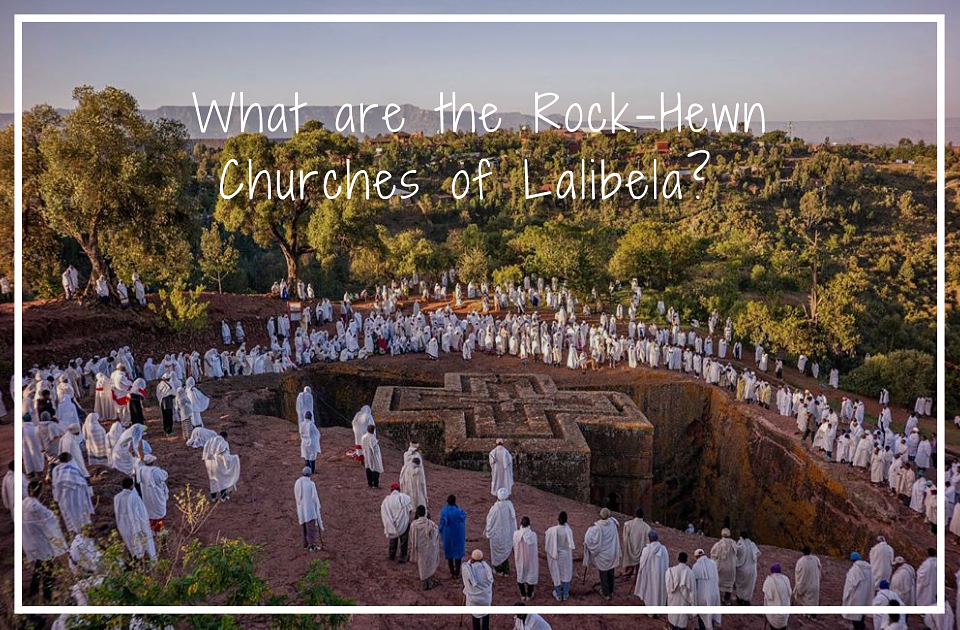What are the Rock-Hewn Churches of Lalibela?

Posted on Thu 27 May 2021
Ethiopia is truly a nation like no other. A country that requires you to peel back the layers of diverse wildlife, fascinating history and outstanding natural landscapes before you can really appreciate its splendour. As we have pointed out in previous articles, a journey to Ethiopia is not for the faint-hearted, but as the saying goes, who dares, wins. In this article, we’ll be looking at just one of the many mesmerising locations the country has to offer, the rock-hewn churches.
What Are They?
Towards the north lies the small town of Lalibela, home of the astonishing rock-hewn churches. The town’s population is roughly 20,000 and is one of the most religious towns in the country, predominantly Ethiopian Orthodox Christian. The churches are an incredible sight to behold; building-sized structures that have been carved and chiselled from single pieces of stone. For the most part, they are below ground level, meaning you need to venture down small trenches or steps in order to reach the bottom. The churches are constantly in attendance, either by locals or by people from other parts of the country that have travelled to spend time there. In our Ethiopia tours, we are fortunate enough to be able to offer our travellers a chance to visit the churches and spend time in this stunning location. In total, there are 11 churches in the area, each demonstrating a unique and bold achievement.
The History of the Churches
The building of the churches is attributed to King Lalibela, who reigned from 1181 to 1221, with the churches being built during the 12th and 13th centuries. The town of Lalibela took the name from the King as he attempted to create a ‘new Jerusalem’ there with the creation of the churches, as such, many of the locations in the town have biblical names. The River Jordan which flows through Lalibela separates the two groups of churches; to the north lies:
Biete Medhani Alem (House of the Saviour of the World)
Biete Mariam (House of Mary)
Biete Maskal (House of the Cross)
Biete Denagel (House of Virgins)
Biete Golgotha Mikael (House of Golgotha Mikael)
And to the south, you can find:
Biete Amanuel (House of Emmanuel)
Biete Qeddus Mercoreus (House of St. Mercoreos)
Biete Abba Libanos (House of Abbot Libanos)
Biete Gabriel Raphael (House of Gabriel Raphael)
Biete Lehem (House of Holy Bread)
The eleventh church is more secluded but is connected by a series of trenches; this is Biete Ghiorgis (House of St. George). The churches were hewn and shaped out of monolithic blocks, meaning a single block of stone. This also means that any designs, shapes or carvings are all done by hand and were done without the need to add elements to the structures. An enormous task in itself, but also carved were the drainage ditches, trenches and ceremonial passages that can be seen in and around the various buildings. The more secluded church, Biete Ghiorgis (House of St. George), is the most iconic, with its famous cruciform structure.
Cultural Importance
The churches have huge cultural significance, with both locals and visitors from other parts of the country visiting them regularly to take part in religious ceremonies. The churches, unlike many ancient locations around the world, are preserved in their natural settings, a testament to the importance of these buildings. Unfortunately, there are some elements of the churches that have been damaged over the years, either by general use or by natural changes in the landscape. We’d encourage you to take care and show the utmost respect when visiting these extraordinary structures. They are a unique and important link to a bygone era, one that should be celebrated and cared for in equal measure.
It’s also worth noting that Lalibela isn’t the only home of rock-hewn countries in Ethiopia. The region of Tigray is also home to some of the country’s most spectacular religious structures, however, reaching them is far from a walk in the park. For many, a climb or trek is required meaning they can often scare off many visitors.
If you are inspired to take a trip to Ethiopia after reading this, why not check out our experience holidays? Both Tigray and Lalibela are included in our Ethiopia Experience. Or, if you need a little bit more convincing, we’ve written numerous blog posts about the fascinating country which you can see here!
Header Image Source: gabriel.jia.photography
Read more from our blog here
